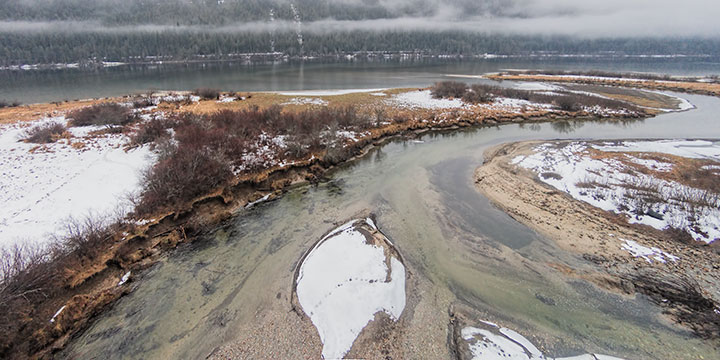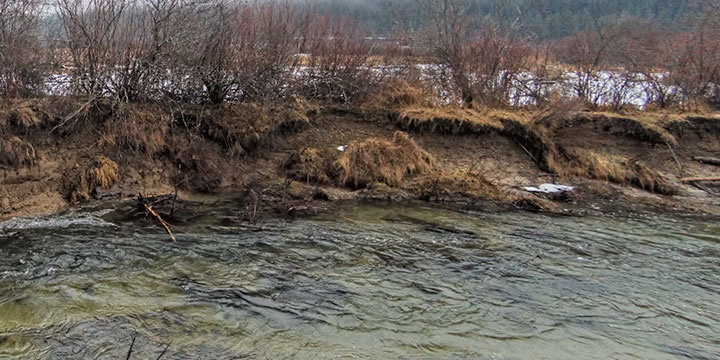Creeks are brimming with water after days of warm rain and snowmelt. A few have burst banks while others merely cut into a bank that will give way on another occasion.
When a creek takes a serpentine course, the outside of the bend erodes and that material is transported to the inside of the bend or forms islands in the middle.
Near the top right of this picture, Kokanee Creek flows into Kootenay Lake. Slightly upstream (on a line from the lower left to the middle) is a long bank that is collapsing as it is undercut by the creek. After awhile the undercut topsoil slumps into the creek. Ultimately, the creek will break right through and reach the lake along a new path.
Despite both the physical evidence of bank slump, and Park signs that warn people to stay clear of the edge, visitors often stand on spots about to collapse.

Nature loves curves, for all sorts of good reasons. How foolish, in times past, when “engineers” tried to force creeks into straight-line pathways. In Kelowna, a big project is underway to return some of the natural serpentine ways of Mission Creek. Costly, but such a good decision!
Denise, serpentine flows of water are constantly changing position as material is transferred from the outside of the bend to the inside. But, as a creek often serves as a property boundary, adjacent owners tend to view such natural changes as an inconvenience.
This has been interesting to watch. A coming spring will see the freshet wash out the bank and the flow of the creek will change. The serpentine to the west will become one of the long ponds similar to what we see below the group campground, full of birds and other wildlife. The straight line flow won’t last; deposited silt will recreate a serpentine in another location.
Right now a combination of increased flow and low lake levels accelerate the process.
Something to watch for. Right now the creek bottom is dark, but when the spring flow increases the lighter colored silt will be washed down changing the color to something like freshly broken granite. If you time it right you can see the line between the new and old work it’s way down the creek.